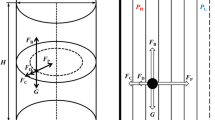Abstract
The collision efficiency factor of bubble and particle α bp in dissolved air flotation (DAF) can be calculated theoretically by trajectory analysis, which takes into account both hydrodynamics and inter-particle forces. To determine the theoretically optimum particle size for any given bubble size, a collision efficiency diagram for DAF was developed where collision efficiency is contoured on a plane of particle and bubble sizes for different conditions of particle zeta potential. A set of experiments tested the validity of the suggested collision efficiency diagram, and examined whether pretreatment is important and why slight coagulant overdosing and shorter flocculation times are generally preferred in DAF, both current, accepted practices. Batch DAF reactors were used and kaolin samples were prepared from jar tests using different alum dosages and flocculation times. The particle size distribution, particle zeta potential, and turbidity removal in each experiment were measured, as were bubble size and zeta potential. The results agreed well with the predictions of the collision efficiency diagram and explained current practices. A collision efficiency diagram identifies the pretreatment goal, i.e., tailoring of the optimum characteristics required of particles (zeta potential and size) under existing operational bubble characteristic.
Similar content being viewed by others
References
Han, M.Y. and Lawler, D.F. (1991). “Interactions of two settling spheres: settling rates and collision efficiencies.”J. hydr. Engrg., ASCE, Vol. 117, No. 10, pp. 1269–1289.
Han, M. Y., Dockko, S. and Park, C. H. (1997). “Collision efficiency factor of bubble and particle in DAF.”Proc. Dissolved Air Flotation, CIWEM, London, UK, pp. 409–416.
Han, M.Y. and Dockko, S. (1999). “Zeta potential measurement of bubbles in DAF process and its effect on the removal efficiency”,Water Supply, Vol. 17, No. 3/4, pp. 177–182.
Han, M.Y. (2000). “Modeling of DAF: The effect of particle and bubble characteristics”,Proc. The Modeling of Conventional Drinking Water Production Processes, IWA, Delft, The Netherlands.
Author information
Authors and Affiliations
Additional information
The manuscript for this paper was submitted for review on August 11, 2000.
Rights and permissions
About this article
Cite this article
Han, M., Kim, W., Han, Y. et al. Experimental verification of collision efficiency factor in DAF. KSCE J Civ Eng 4, 161–164 (2000). https://doi.org/10.1007/BF02830869
Issue Date:
DOI: https://doi.org/10.1007/BF02830869




